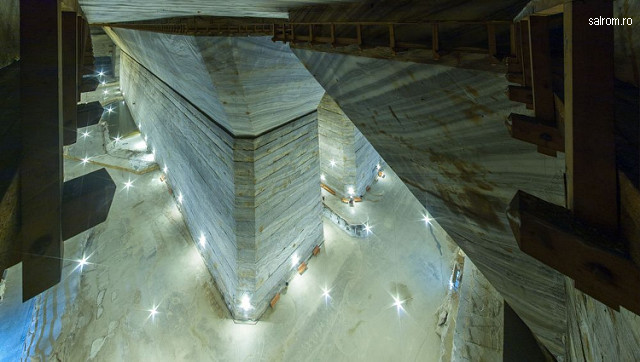Prahova – Tourism Destination

Daniel Onea, 18.03.2021, 13:39
Today we are going to one of the most popular tourist areas of Romania, Prahova County. We will be talking about active tourism, about wine tastings, history, and quaint museums. Prahova County welcomed 2021 with a rich tourism offer. Our guides will be Anda Popa, from the Association for the Promotion and Development of Tourism in Prahova, and Carmen Banu, conservation curator for the Nicolae Simache Clock Museum of Ploiesti.
Prahova County has a great variety of forms of relief, from plains to hills to mountains. Whether we are talking about active tourism, cultural, business, or spa tourism, the destination is complex. Here is Anda Popa, from the Association for the Promotion and Development of Tourism in Prahova:
“For the people who have never been to our area, here are a few points of reference: we are north of the capital Bucharest, about 40 minutes away from the international airport Otopeni. Our county is traversed by the 45th parallel, in the hill area where we have wine country, Dealu Mare, which shares a lot with the Bordeaux area of France. Here, tourists get a chance to taste the local star variety, Feteasca Neagra, the ambassador of Romanian wines. Then, if you are new to the area, we invite you to have a royal experience, at Peles Castle. It is among the top ten most beautiful castles in the world, according to Le Figaro daily, and is the former summer residence of the Romanian royal family. Also, you can get accommodation in the villas designed by the same architect who designed Peles Castle. We invite you to the Bucegi Mountains to see the Sphinx, or the Caraiman Cross. It has been listed in the Guinness Book of Records since 2014, as the cross lying at the highest altitude, 2291 meters. Then we invite you to the Slanic salt mine, the biggest in Europe. Also here you can see the sky beneath the ground, the biggest 4K planetarium in Romania.”
In the Dealu Mare area you can stop over for wine tastings, and, if you book accommodation in the area, you can rent bicycles for trips around the area. But, if you prefer winter sports, the Bucegi Mountains are waiting. Here is Anda Popa:
“If you like skiing and are a beginner, you are eagerly awaited here from December to May in Prahova Valley, in one of the three major resorts there: Sinaia, Busteni, and Azuga. Then you are invited to Floresti, to see the ruins of the Cantacuzino Palace, inspired by the architecture of the Little Trianon palace. However, you also have to try the local specialties: cascaveaua — a type of hard cheese typical of the area, bulz — which is cheese covered in polenta, sheep pastrami, homemade liquor, and the wines.”
Each area has its specificity, but the best known of all is definitely Prahova Valley. People who visit Romania have definitely visited it, says Anda Popa, and she gave us a few pointers for our stopovers:
“If you come from Bucharest, before getting to Prahova Valley you can visit the Bucov Botanical Garden and Zoo, the Barcanesti workshop making old fashioned peasant leather shoes, and the Ploiesti hippodrome, with over 60 years of tradition in equestrian events. Also in Ploiesti you have two unique museums: the Clock Museum and the Oil Museum. Then, heading north, you can stop over at the Lipanesti Flower School. In Campina, you have the Nicolae Grigorescu Museum, where you can see a collection of sketches made by the famous painter. You can also get a traditional peasant blouse in Breaza, and attend a workshop where you can make your own. Last but not least, if you get to Sinaia, we invite you to see the collection of toy trains.”
Let us now open the gates of one of the two unique museums in Ploiesti, the Clock Museum. With over 1,000 exhibits, the museum showcases the first pocket watch — the Nuremberg Egg — or watches that belonged to various personalities, such as Prince Alexandru Ioan Cuza, Mihail Kogalniceanu, Czar Alexander II, or kings Carol I and Mihai I. Carmen Banu is conservation curator for the Nicolae Simache Clock Museum of Ploiesti:
“Set up in 1963 by Professor Nicolae Simache, the Clock Museum is unique among museums in Romania, illustrating time telling along over 400 years, from the mid-16th century until mid-20th century. The museum is housed in a building that is a monument of architecture, built in late 19th century. The museum patrimony, of a great artistic diversity, includes sundials, home and travel clocks, hourglasses, novelty watches, naval chronometers, with decorations specific to the era in which they were created.”
This diverse collection includes musical automata or musical clocks. Most of them are still in working condition, even though some are 150 years old. At the same time, says Carmen Banu, in the entire world there are only three historically valuable astronomical clocks, and the one in the Clock Museum, built by Jeremias Metzker, is the oldest.
“There are many objects here that attract the tourists. One of the most important of all is the clock built by Jeremias Metzker in mid-16th century, in 1562. It is a very complex astronomical clock, with dials for showing time, but also for calendar dates, zodiac signs, and the known planets at the time. It is an extremely complex clock for its time, and even for our time.”
So here you have the ideal vacation destination. For more details on the tourist objectives in Prahova County, or for suggestions for a tour, you are invited to access the official website of this destination, promoted by the Association for the Promotion and Development of Tourism in Prahova, visitprahova.ro.






























